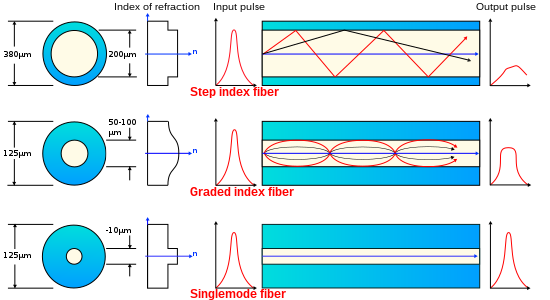I'm doing photonics atm at uni, hopefully i can help. I'm going to assume you mean single mode, multi mode.
Both of the cores are 'generally' the same for single mode and multi mode, usually 2 fibres, but multi mode tends to be a thicker.
The difference between the two is that multi mode (as the name suggests) can carry more than one wavelength of light at a time, and it is determined by the Q factor of the fiber. The same fibre can be converted into single mode if the wavelength goes over a certain wavelength, as determined by the Q factor.
Single mode is faster, and can go a lot further, yet is a lot more expensive than multimode fibre. Multimode is good for medium distance transmissions, not good for long distance because there tends to be more destructive interference as distance increases. I believe you'll find as we head towards the gigabit era that multimode will not be used as much, i don't think it can handle the new technology as well as single mode can.
Answer your questions?

